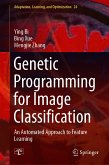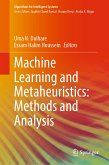When discussing classification, support vector machines are known to be a capable and efficient technique to learn and predict with high accuracy within a quick time frame. Yet, their black box means to do so make the practical users quite circumspect about relying on it, without much understanding of the how and why of its predictions. The question raised in this book is how can this ‘masked hero’ be made more comprehensible and friendly to the public: provide a surrogate model for its hidden optimization engine, replace the method completely or appoint a more friendly approach to tag along and offer the much desired explanations? Evolutionary algorithms can do all these and this book presents such possibilities of achieving high accuracy, comprehensibility, reasonable runtime as well as unconstrained performance.
From the book reviews:
"This book is intended for scholars, students, and developers who are interested and engaged in machine learning approaches and, particularly, in classification approaches via support vector machines (SVMs). ... the book is recommended to those with advanced knowledge in machine learning and, in particular, SVMs as a hypothesis modeling classification approach. ... the presentation of each topic remains systematic and the authors make good use of examples throughout the book." (Epaminondas Kapetanios, Computing Reviews, November, 2014)
"This book is intended for scholars, students, and developers who are interested and engaged in machine learning approaches and, particularly, in classification approaches via support vector machines (SVMs). ... the book is recommended to those with advanced knowledge in machine learning and, in particular, SVMs as a hypothesis modeling classification approach. ... the presentation of each topic remains systematic and the authors make good use of examples throughout the book." (Epaminondas Kapetanios, Computing Reviews, November, 2014)








